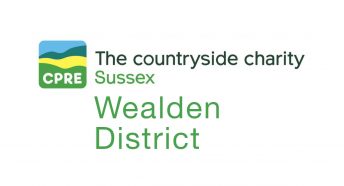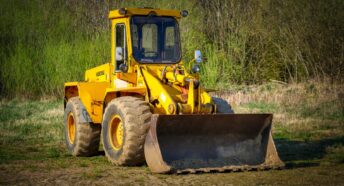Wealden District Update August 2020
CPRE Sussex work in Wealden District
Wealden Local Plan
The current development plan consists of the Core Strategy (2006 – 27) and saved policies from the 1998 Wealden Local Plan. The Core Strategy intended that 450 homes/year would be provided. However, the Core Strategy was due to be reviewed in 2018, but Wealden District Council (DC) decided to replace this Strategy rather than review it. A replacement plan was submitted to the Planning Inspectorate (PINS) in January 2019 for examination. This new plan proposed a housing total for the District of 950/year between 2013 – 2028 largely concentrated in Polegate/Willingdon, Stone Cross and Hailsham/Hellingly, the so-called South Wealden Growth Area.
PINS undertook the Stage 1 examination of the plan in the summer of 2019 and we attended this and contributed as participants. The Inspector provided her findings to Wealden DC in December last year and recommended that they withdraw the plan as she had decided that the Council had failed in their duty to co-operate with neighbouring authorities, principally Eastbourne, about assisting with their unmet housing need. The inspector also considered that Wealden DC’s approach to the European protected species at Ashdown Forest was too precautionary.
In February, Wealden DC voted to withdraw the plan and commenced work on a replacement plan. The housing growth in this new plan will be greater than the one it is replacing and Wealden DC has said that the housing growth could be as high as 1,650 homes/year. This quantity will require a very large amount of greenfield sites to be developed.
We do not believe the Inspector was correct with her view on the protection of Ashdown Forest and she had misunderstood Wealden DC’s Habitats Regulations Assessment (HRA). Wealden DC decided not to challenge the inspector’s conclusions that the HRA was wrong, despite a comprehensive body of evidence compiled by experts renowned in their field. The Council has now withdrawn the HRA and has granted permission for many new developments, any one of which, could cause harm to Ashdown Forest in contravention of the Habitats Regulations. We asked the council for evidence to demonstrate that they are not acting unlawfully in granting permission for every development that they have approved since Christmas.
Meanwhile, we have been objecting to the large applications considered by Wealden DC this year but the Council has brushed aside our HRA based points. A letter was sent to the Council in July (CPRE Sussex letter to Wealden DC 28 July 2020 ) asking several questions with regard to Ashdown Forest and Wealden DC has agreed to meet us on 3 September when we hope to receive their answers.
Wealden District current housing delivery
Since the Core Strategy was adopted in 2013, there have been 2,674 houses built to 2017/18 at an average of 534/year. However, in 2018/19, Wealden DC broke their housing delivery record with 841 new houses, whilst last year, this increased to 1,034 houses.
But to achieve the figure Wealden DC say may be in the new plan, this new record figure will have to increase by 60%!
We are seriously concerned about the damage currently being inflicted to our countryside from housing development, but a sustained 60% increase to this current record level is unparalleled.
Whereas most of the large site permissions granted over the last couple of years have been sites allocated in the now withdrawn 2019 local plan, there have been some notable exceptions. One of these is at Hesmonds Stud in East Hoathly, where the land owner applied and was granted last month permission to build a development of 205 houses. This in a village of only 381 houses, minimal employment opportunities and poor public transport links making most new residents dependent on cars for access to employment and services. The site was not allocated in the withdrawn plan and was outside the development boundary proposed in that plan. This application was contrary to a number of policies designed to ensure that developments are sustainable and unfortunately illustrates Wealden DC’s approach to maximising housing growth.
Climate Emergency
In July last year, Wealden DC declared a Climate Emergency and committed to become carbon neutral by 2050. An early resolution was to compile a Climate Emergency Plan to set out how carbon neutrality by 2050 would be achieved.
In establishing their carbon footprint, which they estimate to be 0.2% of the total in the District, Wealden DC is only considering emissions resulting from areas where they are directly responsible for paying the fuel bill. Thus, for example, as they only own nine cars, their transport emissions are very low. They are not including the much larger transport emissions resulting from Wealden DC staff driving to/from work or driving as part of their job. The emissions from the waste collections and disposal are not included as this fuel is bought by their contractor.
One other area where Wealden DC has a part in future carbon emissions is their permitting of development. Every new house, office, shop etc. has a considerable carbon footprint in its construction from the fuel used by workers travelling to the site, by the construction plant on the site and the carbon embedded in the materials used on the site. Once constructed, the ongoing use of the building, principally heating, and the travel undertaken by the occupants all have a continuing carbon footprint. Despite that new building only existing because Wealden DC gave it permission, they are not counting its carbon footprint as part of their emissions.
By only taking ownership of a very narrow definition of their carbon footprint, the reduction to zero by 2050 will be very welcome, but is only a tiny part of the emissions in the District for which the Council is responsible. We would hope that the Council should show leadership and include in their carbon footprint all sources where the Council bears a responsibility for their release e.g.
- all emissions caused by their staff in travelling to/from and during work
- all emissions arising from new the construction and subsequent use of new developments
- all emissions arising from services provided by the Council e.g. waste disposal
New housing in the High Weald AONB
The AONB should receive the same level of protection from development as the National Parks (National Planning Policy Framework (NPPF) para. 172). But this requirement does not appear to be recognised by Wealden DC. In early 2019 permission was granted for a 103-house development in Steel Cross, Crowborough within the AONB, whilst in July this year, a 119-house application within the AONB immediately north of Eridge Road Crowborough was approved. Officers convinced the planning committee that the two sites were not particularly high-quality examples of the AONB features and that permission would not harm this protected landscape. This approach is contrary to the rules, a site is either inside the AONB, in which case it should receive the protection afforded the statutory AONB designation, or it is outside and does not qualify. There is no provision for different grades of AONB land with development being permitted on lesser quality AONB land. That this concept has been proposed by officers and accepted by Councillors is very disappointing and demonstrates a very cavalier approach to any legitimate constraints to development.
As one dissenting Councillor said at the July meeting: “If this approach continues, we will not have any AONB land left”.
We will continue to object to inappropriate development within the AONB, and across the District.



